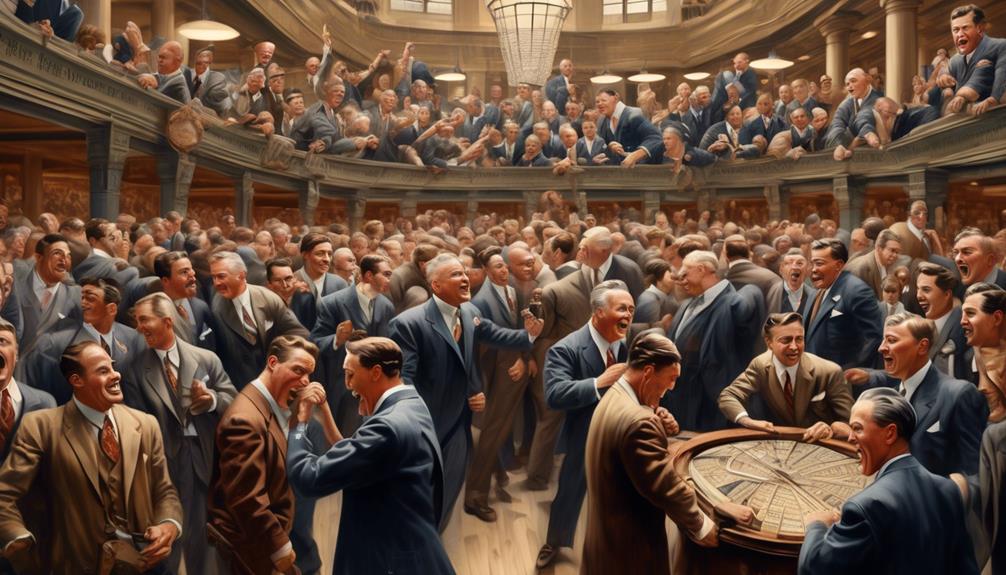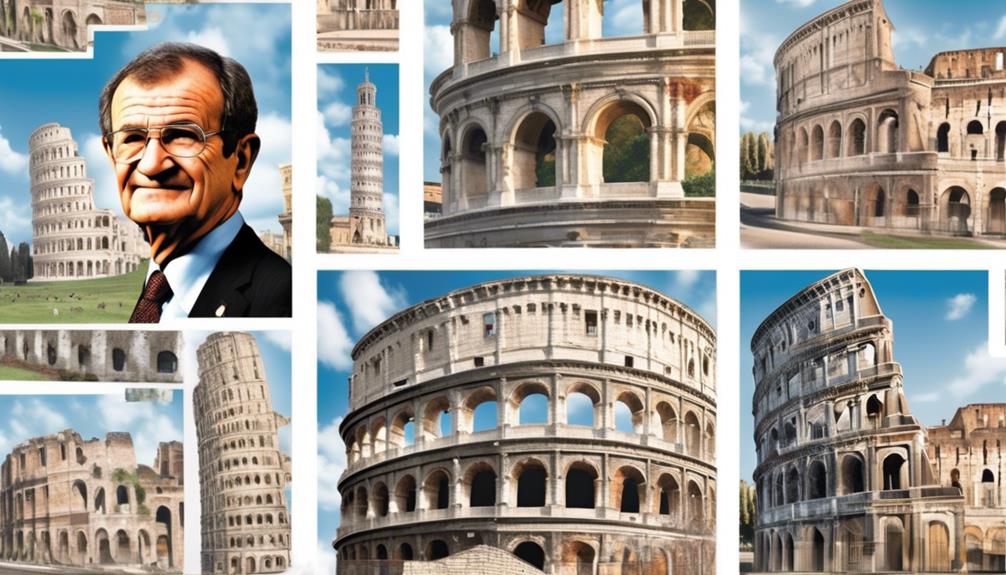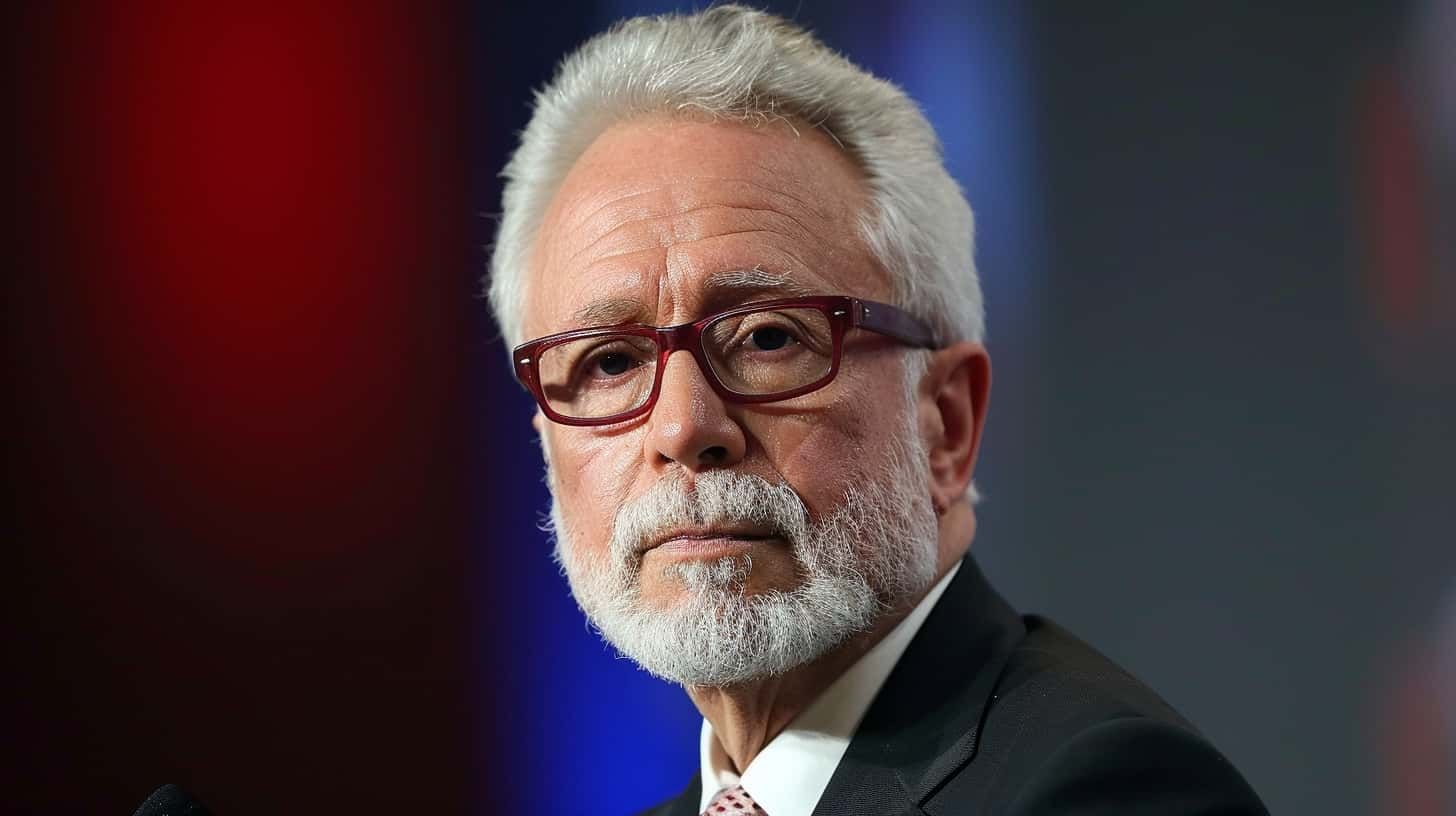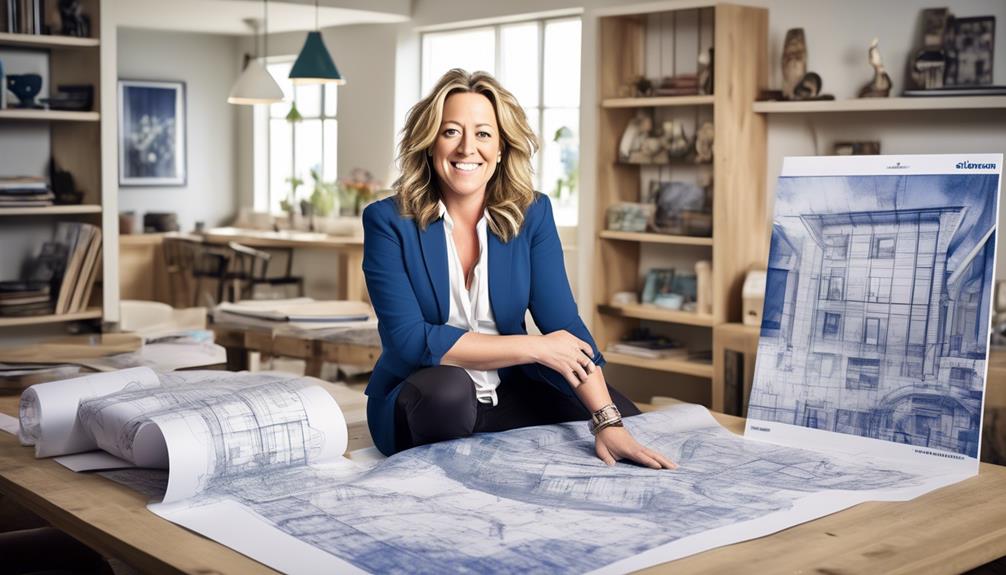In our journey through the wisdom of Jesse Livermore, a renowned American stock market investor, we discover invaluable guidance to navigate our personal financial pursuits.
Consider this intriguing fact: Livermore, known for his exceptional trading skills, amassed a fortune equivalent to $1.2 billion in today's dollars during his career.
Our focus is not solely on his financial achievements, but rather on the valuable lessons he learned along the way. Through his quotes, we delve into the importance of patience, the power of trends, and understanding market psychology.
We also touch on topics such as cutting losses, avoiding overtrading, and the role of confidence in trading.
By staying informed and drawing from Livermore's experiences, we can gain valuable insights that can help us navigate the ever-changing world of investing.
Key Takeaways
- Patience, research, and analysis are essential for making informed investment choices.
- Understanding market trends and using tools like moving averages and trendlines can help identify potential opportunities and reversals.
- Capitalizing on market trends and opportunities can lead to increased earnings.
- Emotional discipline, awareness of market psychology, and avoiding impulsive decisions are crucial for successful trading.
The Importance of Patience
Patience is a vital virtue that plays a crucial role in achieving success in the world of trading and investing, allowing individuals to navigate the unpredictable fluctuations of the market with a calm and strategic mindset. The benefits of patience in trading and investing are manifold.
Firstly, it helps to mitigate the risk of making hasty decisions based on temporary market fluctuations. By patiently waiting for the right opportunity, investors can ensure that they're making informed choices based on thorough research and analysis. Patience also allows investors to ride out market downturns and avoid panic-selling, which often leads to significant losses.
Furthermore, patience enables investors to take advantage of long-term growth opportunities. By waiting for their investments to mature, individuals can reap the benefits of compounding returns and potentially achieve higher profits in the future. Additionally, patience fosters discipline and emotional control, preventing impulsive buying and selling that can be detrimental to investment portfolios.
On the other hand, the drawbacks of impatience in trading and investing can be severe. Impatient individuals may succumb to the temptation of quick gains, leading them to engage in risky and speculative trading practices. This can result in substantial financial losses and damage to their overall investment strategy. Moreover, impatience can hinder the ability to properly monitor and adjust investment positions, potentially missing out on crucial opportunities or failing to mitigate losses.
The Power of Trends
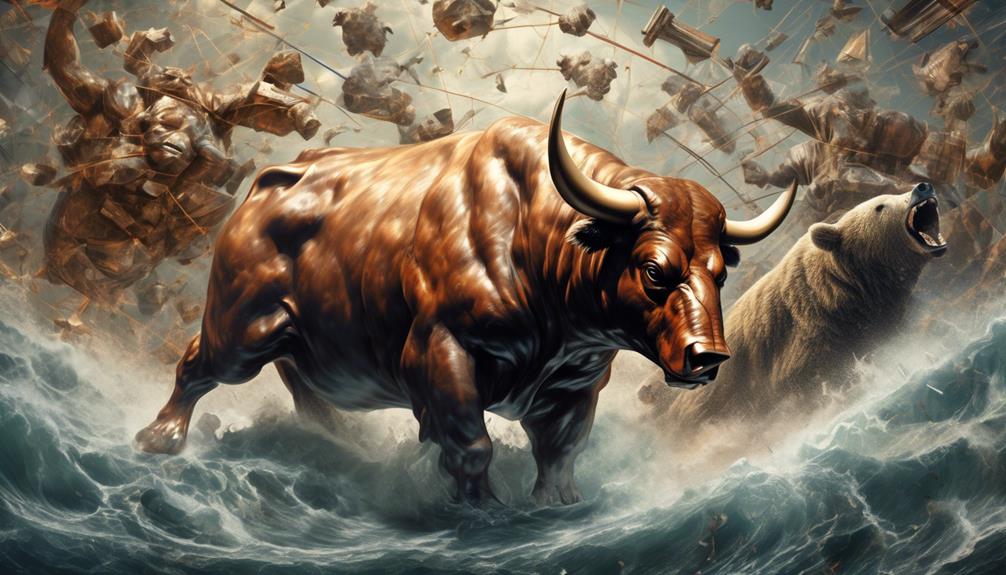
When it comes to investing, understanding and capitalizing on market trends can be a powerful tool. By identifying trends in the market, we can make informed decisions about where to invest our capital.
Trend identification strategies help us to navigate the ever-changing landscape of the market and increase our chances of success.
Trend Identification Strategies
Trend identification strategies are essential for successful trading as they provide valuable insights into the direction of the market. By employing effective techniques, traders can identify potential trend reversals and capitalize on market signals. Here are five key strategies for trend identification:
- Moving Averages: Utilizing moving averages helps identify the overall trend by smoothing out price fluctuations.
- Trendlines: Drawing trendlines on price charts helps visualize the direction of the market and spot potential trend reversals.
- Oscillators: Oscillators such as the Relative Strength Index (RSI) and Stochastic Oscillator can indicate overbought or oversold conditions, signaling potential trend reversals.
- Price Patterns: Recognizing chart patterns, such as head and shoulders or double tops/bottoms, can provide indications of future price movements.
- Volume Analysis: Analyzing volume alongside price movements helps confirm the strength of a trend or identify potential trend reversals.
Capitalizing on Market Trends
To effectively capitalize on market trends, it is crucial for traders to understand the power and significance of these trends in guiding their trading decisions. By recognizing and following market trends, traders can identify potential opportunities for maximizing profits. Jesse Livermore, a famous American stock market investor, emphasized the importance of capitalizing on market opportunities. He believed that by aligning with the prevailing market trend, traders could increase their chances of success. This involves studying price movements, analyzing market data, and identifying patterns that indicate a strong trend. To assist traders in understanding the concept of capitalizing on market trends, here is a table summarizing key points:
| Key Points | Explanation |
|---|---|
| Recognizing market trends | Identifying the direction in which the market is moving |
| Following market trends | Aligning trading decisions with the prevailing market direction |
| Analyzing market data | Studying price movements and identifying patterns |
| Maximizing profits | Capitalizing on market opportunities to increase earnings |
Understanding Market Psychology
Understanding market psychology is crucial for successful trading. Emotional trading mistakes, such as letting fear or greed dictate our decisions, can lead to costly errors.
Additionally, the influence of crowd mentality can sway market behavior, making it essential to be aware of these dynamics in order to navigate the market effectively.
Emotional Trading Mistakes
One common mistake made by traders is allowing their emotions to dictate their trading decisions, thus disregarding market psychology. Emotional trading can lead to impulsive decisions that are driven by fear, greed, or other strong emotions, rather than rational analysis of market conditions. This can result in buying or selling stocks at the wrong time, missing out on potential profits, or incurring unnecessary losses.
To avoid these pitfalls, traders should strive to maintain emotional discipline and make decisions based on objective criteria, such as technical analysis or fundamental indicators. They should also develop a clear trading plan and stick to it, rather than making impulsive decisions in the heat of the moment.
Finally, traders should continuously educate themselves about market psychology and learn from their mistakes in order to improve their trading skills.
- Emotions can cloud judgment and lead to impulsive decisions
- Fear and greed are two common emotions that can impact trading decisions
- Emotional trading can lead to buying or selling stocks at the wrong time
- Maintaining emotional discipline is crucial for successful trading
- Continuous education and learning from mistakes can help improve trading skills
Crowd Mentality Influence
Crowd mentality plays a significant role in influencing market psychology and shaping trading decisions. The concept of herd mentality refers to the tendency of individuals to conform to the actions and opinions of a larger group. In the context of the stock market, this means that investors often make decisions based on the actions of others, rather than independently analyzing the market.
Social influence plays a crucial role in driving the herd mentality. When a large number of investors start buying or selling a particular stock, others are more likely to follow suit, fearing they might miss out on potential gains or avoid losses. This behavior can create market bubbles or crashes, as the actions of the crowd may not always align with rational decision-making.
Recognizing the influence of crowd mentality is essential for traders to make informed decisions and avoid falling into the traps of emotional trading.
Fear and Greed Impact
The impact of fear and greed on market psychology is a crucial aspect to understand in trading. Emotions play a significant role in influencing the decisions of traders, often leading to irrational behavior and market volatility. Overcoming fear and greed is essential for successful trading, as these emotions can cloud judgment and lead to poor decision-making.
Here are five key points to consider regarding the impact of emotions in trading:
- Fear can cause panic selling, leading to a downward spiral in prices.
- Greed can drive irrational exuberance, creating asset bubbles that eventually burst.
- Understanding market psychology helps traders identify trends and patterns driven by fear and greed.
- Developing emotional intelligence allows traders to remain calm and make rational decisions.
- Implementing risk management strategies can mitigate the impact of fear and greed on trading outcomes.
The Art of Cutting Losses

Cutting losses is a crucial skill in the world of investing, as it allows traders to protect their capital and avoid significant financial setbacks. Implementing effective cutting losses strategies and risk management techniques is essential for achieving success in the stock market. Jesse Livermore, a famous American stock market investor, recognized the importance of this skill and emphasized the need to exit losing trades promptly.
One strategy Livermore advocated for cutting losses is setting predetermined stop-loss orders. This involves placing an order to sell a stock at a specific price level, limiting potential losses if the market moves against the trader. By defining an acceptable level of risk in advance, traders can avoid emotional decision-making and stick to their trading plan.
Another technique Livermore highlighted is recognizing when a trade isn't working and quickly exiting it. This requires discipline and a willingness to admit when a mistake has been made. Livermore believed that holding onto losing trades in the hope of a reversal was a dangerous practice that could lead to substantial financial losses.
The Dangers of Overtrading
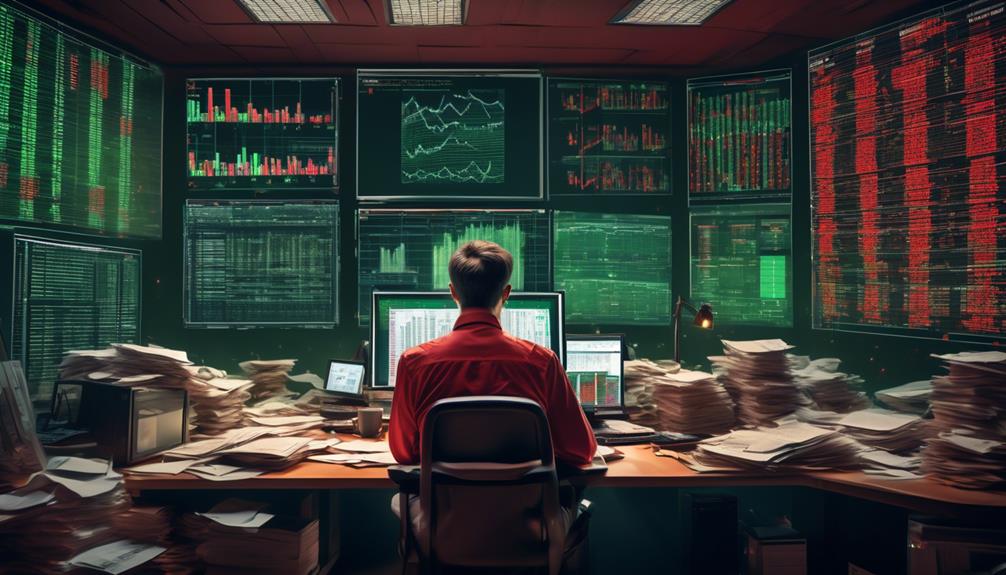
After understanding the importance of cutting losses in trading, it's crucial to be aware of the dangers of overtrading. Overtrading refers to excessive buying and selling of securities, driven by emotions or a desire for quick profits. It can result in significant financial losses and hinder long-term success in the stock market.
To avoid falling into the trap of overtrading, here are some strategies to consider:
- Develop a trading plan: Having a well-defined plan helps to maintain discipline and avoid impulsive trading decisions.
- Set clear goals: Establishing specific and realistic goals helps to stay focused and prevents unnecessary trades.
- Stick to a risk management strategy: Implementing proper risk management techniques, such as setting stop-loss orders and limiting position sizes, can protect against excessive losses.
- Control emotions: Emotional trading is a common trigger for overtrading. Practicing self-control and maintaining a rational mindset is essential.
- Monitor trading activity: Regularly tracking and reviewing trading activity can provide insights into patterns of overtrading and help identify areas for improvement.
The Perils of Greed

Excessive greed can be detrimental to trading success, leading to irrational decision-making and potential financial losses. When greed takes over, traders may become blinded by the potential for higher profits and ignore the risks involved. This can lead to excessive risk taking, where traders abandon their risk management strategies and become more susceptible to market fluctuations.
The dangers of excessive risk taking are twofold. Firstly, it increases the probability of incurring substantial losses. By taking on more risk than is necessary or manageable, traders expose themselves to greater market volatility and potential downturns. Secondly, excessive risk taking can lead to emotional trading, where impulsive decisions are made without proper analysis or consideration of long-term consequences. This impulsive behavior can further amplify losses and hinder overall trading success.
Furthermore, the consequences of impatience can also contribute to the perils of greed. Impatience often leads traders to chase after quick profits, causing them to enter or exit trades prematurely. This impulsive behavior can result in missed opportunities for profit or locking in losses before a trade has had a chance to fully develop.
To avoid falling into the perils of greed, traders must practice discipline and maintain a rational mindset. By adhering to well-defined risk management strategies and exercising patience, traders can mitigate the detrimental effects of excessive greed and increase their chances of long-term trading success.
The Value of Adaptability

Adaptability is a crucial trait in today's rapidly changing world. As we navigate through uncertain times, it's important to recognize the value of flexibility in our approach.
Importance of Flexibility
Being adaptable is a crucial skill that allows us to navigate the ever-changing landscape of life and achieve success in our endeavors. In the realm of trading and investing, flexibility is equally important. Here are five reasons why:
- Reacting to market changes: Flexibility enables us to quickly adapt to shifts in market conditions, allowing us to make timely and informed decisions.
- Seizing opportunities: By being flexible, we can identify and capitalize on emerging trends and opportunities in the market.
- Managing risk: Flexibility in trading and investing helps us effectively manage risk by adjusting our strategies to mitigate potential losses.
- Learning from mistakes: Being open to change and learning from our mistakes allows us to grow and improve as traders and investors.
- Staying ahead of competition: In a competitive market, flexibility gives us an edge by allowing us to stay ahead of the competition and adapt to new technologies and strategies.
Embracing Change
To succeed in the ever-changing world of trading and investing, embracing change and being adaptable is of utmost importance. Agility in investing is crucial because market conditions are constantly evolving.
Jesse Livermore, a famous American stock market investor, understood the value of adaptability. He recognized that embracing uncertainty and being open to change can lead to profitable opportunities. Livermore believed that the ability to adapt to new market trends and conditions is what sets successful investors apart from the rest.
In the world of finance, where volatility is inevitable, being agile and flexible allows investors to navigate through turbulent times and capitalize on emerging opportunities.
Embracing change isn't just a necessary skill, but a mindset that fosters growth and success in the dynamic landscape of trading and investing.
Agile Mindset
Having an agile mindset is crucial in the ever-changing world of trading and investing. It allows us to adapt to rapidly evolving market conditions and make informed decisions.
Here are five key strategies for cultivating an agile mindset and effectively identifying trends in the market:
- Stay informed: Constantly monitor market news and trends to identify potential opportunities and risks.
- Embrace uncertainty: Understand that the market is unpredictable and be prepared to adapt your strategies accordingly.
- Be flexible: Stay open-minded and willing to adjust your trading approach as market conditions change.
- Learn from mistakes: Analyze past trades to identify patterns and learn from both successful and unsuccessful trades.
- Continuously improve: Seek out new knowledge, learn from experienced traders, and refine your skills to stay ahead of the curve.
The Role of Research and Analysis

Research and analysis play a crucial role in informing and guiding decision-making processes. When it comes to investing in the stock market, understanding the role of experience and the impact of research is essential for success.
Experienced investors know that making informed decisions requires a deep understanding of the market and the companies being invested in. This knowledge is not acquired overnight, but rather through years of actively participating in the market and learning from both successes and failures. Experience allows investors to recognize patterns, anticipate market movements, and make strategic decisions based on past outcomes.
However, relying solely on experience can be risky. The dynamic nature of the stock market requires investors to adapt and stay updated with the latest information. This is where research and analysis come into play. By conducting thorough research and analyzing market trends, financial statements, and industry news, investors can gain valuable insights into the potential risks and rewards of their investment decisions.
To illustrate the importance of research and analysis in investment decision-making, consider the following table:
| Role of Experience | Impact of Research |
|---|---|
| Provides insights based on past outcomes | Identifies potential risks and rewards |
| Helps recognize market patterns | Guides strategic decision-making |
| Enables anticipation of market movements | Keeps investors updated with the latest information |
The Impact of Emotions on Trading

Investors who fail to recognize the impact of their emotions on trading may find themselves making irrational decisions that can negatively affect their investment outcomes. Emotional intelligence plays a crucial role in trading psychology, as it allows investors to understand and manage their emotions effectively. Here are five key points to consider:
- Emotional Awareness: Developing emotional intelligence involves being aware of one's emotions while trading. Recognizing feelings of fear, greed, or overconfidence can prevent impulsive and irrational decision-making.
- Emotional Regulation: Effective traders understand the importance of regulating their emotions. This involves managing stress levels, controlling impulsive behaviors, and maintaining a disciplined approach to trading.
- Decision-Making: Emotional intelligence helps investors make more rational decisions. By separating emotions from trading decisions, investors can objectively analyze market conditions and make informed choices based on data and analysis.
- Risk Management: Emotional intelligence is essential for managing risk effectively. It helps investors set realistic expectations, avoid excessive risk-taking, and adhere to their trading strategies and rules.
- Learning from Mistakes: Emotional intelligence enables investors to learn from their mistakes and adapt their strategies accordingly. It encourages self-reflection and continuous improvement, which are crucial for long-term success in trading.
The Significance of Risk Management
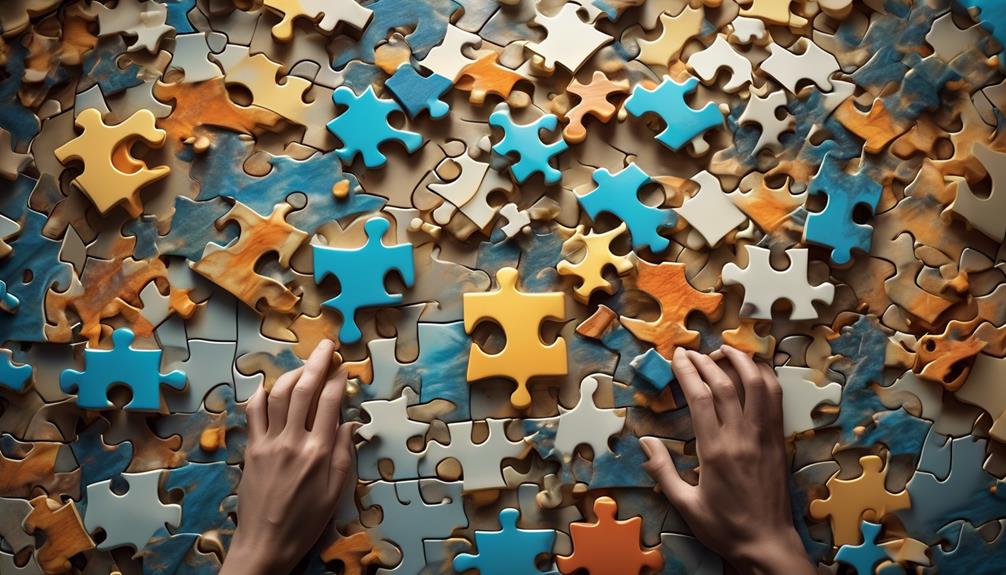
Risk management is a critical aspect of trading that ensures investors can protect their capital and make informed decisions. Effective risk management involves the assessment and mitigation of potential risks in order to minimize losses and maximize profits.
By conducting a thorough risk assessment, traders can identify and evaluate the potential risks associated with a particular investment. This includes analyzing market conditions, company fundamentals, and external factors that may impact the investment's performance.
Once risks have been identified, the next step is to implement risk mitigation strategies. This involves taking proactive measures to reduce the impact of potential risks. For example, diversifying one's portfolio can help spread the risk across different assets and sectors, reducing the vulnerability to any single investment. Setting stop-loss orders and using protective options strategies can also help limit losses in the event of adverse market movements.
Furthermore, risk management involves continuously monitoring and adjusting one's investment strategy to account for changing market conditions and new information. This allows traders to make informed decisions based on the most up-to-date data and minimize the impact of unexpected events.
The Need for Discipline
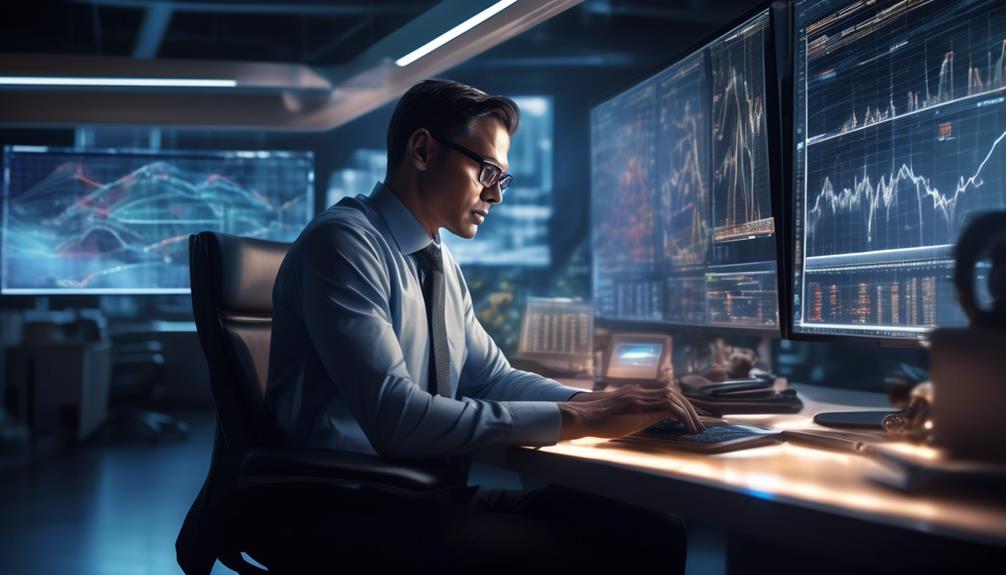
Discipline is a crucial aspect of successful trading, as it helps us maintain self-control and make consistent decisions. By adhering to our trading rules and strategies, we can reduce impulsive behaviors and emotional responses that may lead to poor outcomes.
The need for discipline can't be overstated, as it enables us to stay focused, stick to our plan, and ultimately achieve long-term success in the markets.
Importance of Self-Control
Developing self-control is essential for successful trading and investing, as it allows individuals to make rational decisions based on strategy rather than succumbing to impulsive actions. To master self-control, one must employ effective techniques and strategies. Here are five key self-control techniques to consider:
- Mindfulness: Cultivating awareness of one's thoughts and emotions helps in recognizing and managing impulsive urges.
- Setting clear goals: Defining specific, realistic objectives provides a framework for decision-making and reduces the chances of impulsive actions.
- Creating a trading plan: A well-defined plan outlines entry and exit points, risk management strategies, and helps in sticking to a disciplined approach.
- Practicing patience: Developing patience helps in avoiding premature actions and allows for more thoughtful decision-making.
- Utilizing stop-loss orders: Implementing stop-loss orders helps limit losses and prevents emotions from taking over during market volatility.
Consistency in Decision-Making
Consistency in decision-making is crucial for achieving success in trading and investing, as it ensures a disciplined approach based on a well-defined strategy. Consistency allows traders and investors to make rational and objective decisions, rather than being swayed by emotions or short-term market fluctuations. By following a consistent decision-making process, individuals can avoid impulsive actions that may lead to poor outcomes.
One key aspect of consistency in decision-making is the thorough assessment of risks. Evaluating the potential risks associated with a trade or investment is essential for making informed decisions. This involves analyzing various factors such as market volatility, economic conditions, and company fundamentals. By consistently considering these risks, traders and investors can identify potential pitfalls and adjust their strategies accordingly.
Consistency in decision-making isn't about blindly sticking to a particular strategy, but rather about adapting and refining it based on market conditions and new information. It requires discipline and the ability to stay focused on long-term goals, rather than being influenced by short-term market trends.
Ultimately, consistency in decision-making leads to a more disciplined and systematic approach, increasing the chances of success in trading and investing.
Sticking to Trading Rules
Maintaining adherence to trading rules is essential for achieving success in the financial markets. As traders, we must understand the psychology of trading and the importance of discipline in order to consistently make profitable decisions.
Here are some key risk management techniques that can help us stick to our trading rules:
- Implementing stop-loss orders to protect against excessive losses.
- Setting profit targets to ensure we take profits when they're available.
- Avoiding emotional decision-making by following a systematic approach.
- Developing a trading plan that outlines our rules and strategies.
- Regularly reviewing and analyzing our trades to learn from our successes and failures.
The Role of Confidence in Trading
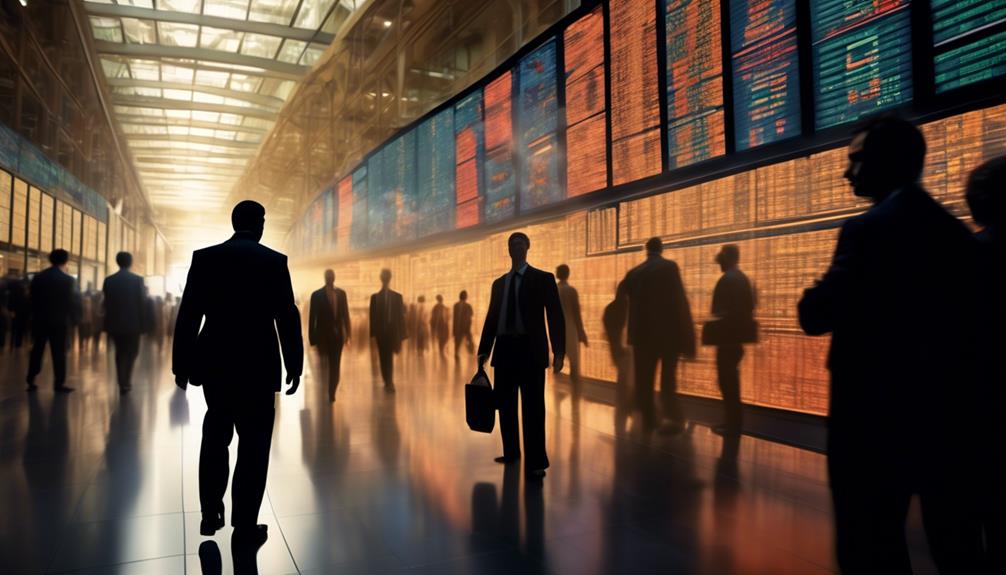
Confidence plays a pivotal role in the success of traders, influencing their decision-making process and overall performance in the market. The psychology of confidence is an essential aspect of trading, as it affects how traders manage self-doubt and make crucial investment choices.
When traders have confidence in their abilities, they're more likely to make informed decisions and stick to their trading rules. This confidence stems from a deep understanding of the market, thorough analysis, and a well-defined trading strategy. It enables traders to stay focused and disciplined, even in the face of uncertainty and market fluctuations.
However, managing self-doubt is equally important. Traders must be aware of the potential impact of fear and doubt on their decision-making process. Overconfidence can lead to reckless decision-making, while excessive self-doubt may result in missed opportunities. Striking the right balance is crucial for success in trading.
Building confidence requires continuous learning, practice, and experience. Traders should constantly evaluate and refine their strategies, keeping track of their successes and failures. By learning from past experiences, traders can develop a robust sense of self-assurance and adaptability.
The Importance of Staying Informed

Staying informed about market trends and news is crucial for traders to make well-informed decisions and navigate the complexities of the financial world. In the fast-paced world of investing, being aware of the latest news and developments can make all the difference in staying ahead of the curve. Here are five reasons why staying informed is essential:
- Identifying Opportunities: By staying up-to-date with market news and trends, traders can identify potential investment opportunities before they become widely known. This allows them to capitalize on these opportunities and potentially achieve higher returns.
- Managing Risks: News can provide valuable insights into the risks associated with certain investments. By staying informed, traders can assess these risks and make more informed decisions to protect their portfolios.
- Understanding Market Sentiment: News can influence market sentiment, which in turn affects stock prices. By staying informed, traders can gauge market sentiment and make decisions based on the prevailing mood, thus potentially capitalizing on market trends.
- Adapting to Market Changes: The financial markets are constantly evolving, and staying informed helps traders adapt to these changes. By being aware of new regulations, economic indicators, and global events, traders can adjust their strategies accordingly.
- Gaining a Competitive Edge: In the competitive world of investing, staying informed gives traders a competitive edge. By having access to the latest news and information, traders can make faster and more informed decisions, potentially leading to greater profits.
The Role of Experience in Investing
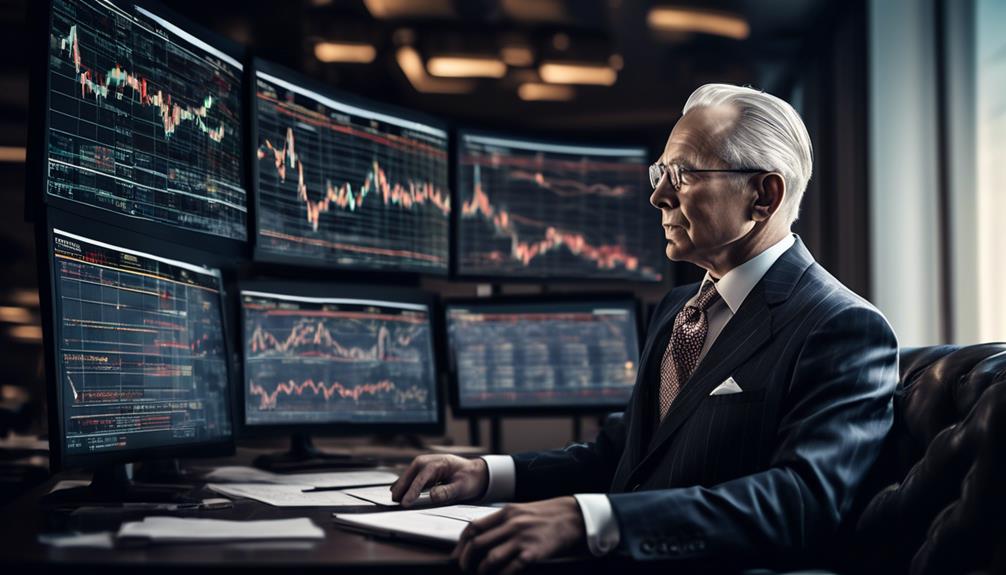
Experience plays a crucial role in shaping the success of an investor, providing valuable insights and lessons that can guide decision-making in the complex world of finance.
When it comes to investing, intuition and timing are key factors that can make or break a trade. Intuition, often referred to as a gut feeling or sixth sense, is the ability to make decisions based on instinct, without relying solely on data or analysis. While intuition may seem subjective, experienced investors understand its value in navigating the unpredictable nature of the market. It allows them to see patterns and trends that others may overlook, helping to identify potential opportunities or risks.
Additionally, the art of timing is an essential skill developed through experience. It involves recognizing the right moment to enter or exit a trade, maximizing profits and minimizing losses. Timing requires a deep understanding of market dynamics and the ability to anticipate market movements. Seasoned investors have honed this skill through years of practice and learning from their past mistakes. They know that successful investing isn't just about buying low and selling high, but also about being patient and disciplined.
The Lessons From Livermore's Downfall
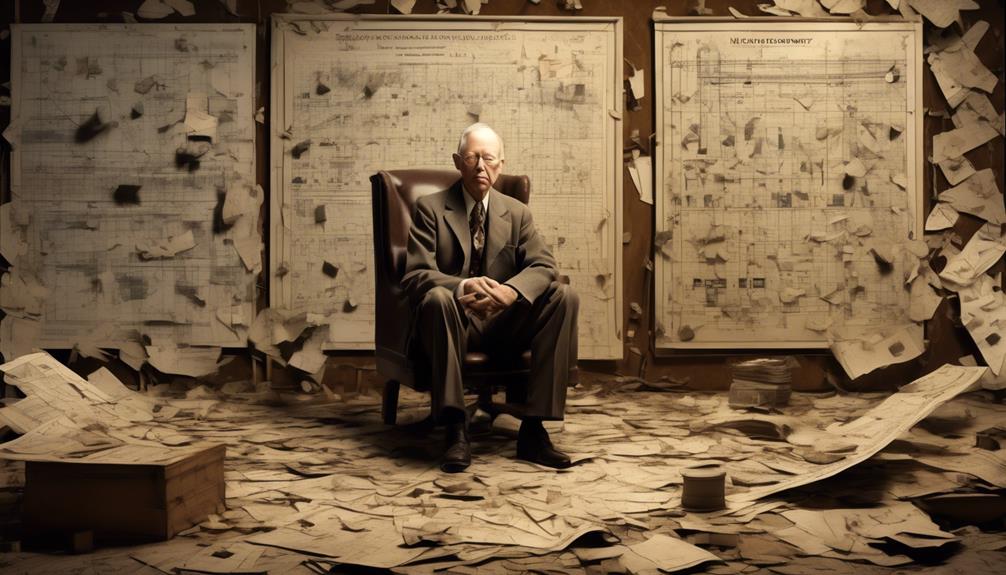
Livermore's downfall serves as a cautionary tale for investors, highlighting the importance of managing emotions and avoiding excessive risk-taking. His experiences offer valuable lessons from failure that can help others navigate the treacherous waters of the stock market. Here are some key takeaways:
- Emotional discipline: Livermore's downfall was largely due to his inability to control his emotions. He allowed fear and greed to dictate his actions, leading to poor decision-making. Investors must learn to detach themselves emotionally from their investments and make rational choices based on facts and analysis.
- Risk management: Livermore's downfall also stemmed from his penchant for taking excessive risks. He often traded on margin, using borrowed money to amplify his gains but also increasing his potential losses. Investors should always prioritize risk management and avoid overexposing themselves to unnecessary risks.
- Adaptability: Livermore failed to adapt to changing market conditions. He clung to outdated strategies and failed to recognize when they were no longer effective. Investors must remain flexible and open-minded, continually adapting their strategies to suit the evolving market environment.
- Patience and discipline: Livermore's impulsive nature and desire for quick profits led to his downfall. Investors must cultivate patience and discipline, understanding that success in the stock market is a marathon, not a sprint. It requires careful planning, research, and the ability to withstand short-term fluctuations.
- Continuous learning: Livermore's downfall highlights the importance of continuous learning and self-improvement. Investors should never stop seeking knowledge and refining their skills. By learning from Livermore's mistakes and avoiding common pitfalls, investors can increase their chances of long-term success in the stock market.
Frequently Asked Questions
What Are Some Common Mistakes That Traders Make When It Comes to Cutting Losses?
When it comes to cutting losses, common mistakes that traders often make include a lack of discipline and emotional attachment. These can lead to overtrading and a focus on quantity over quality.
To avoid these pitfalls, it's crucial to set strict trading rules, prioritize quality trades, and manage emotions through mindfulness and having a well-defined trading plan.
Effective risk management is also essential for minimizing losses and maximizing profits, as demonstrated by Jesse Livermore's downfall.
How Can One Avoid Falling Into the Trap of Overtrading?
Avoiding the trap of overtrading requires discipline. It's easy to get caught up in the excitement of the market and make impulsive trades. However, by sticking to a well-defined trading plan and setting strict limits on the number of trades we make, we can avoid overtrading.
It's important to remember that quality over quantity is key. By focusing on high-quality trades and exercising discipline, we can increase our chances of success in the market.
What Are Some Effective Strategies for Managing Emotions While Trading?
When it comes to managing emotions while trading, there are several effective strategies for emotional control and maintaining discipline.
- It's crucial to develop a solid trading plan and stick to it, avoiding impulsive decisions.
- Setting realistic goals and managing expectations can help prevent emotional roller coasters.
- Practicing self-awareness and mindfulness techniques can also aid in recognizing and managing emotions during trading.
- Additionally, implementing risk management strategies, such as using stop-loss orders, can help minimize emotional reactions to market fluctuations.
How Does Risk Management Affect the Overall Success of a Trader?
Risk management techniques are integral to the overall success of a trader. By effectively managing risk, we can minimize potential losses and protect our capital.
Additionally, risk management promotes discipline in trading, which is crucial for making rational decisions and avoiding emotional trading.
Implementing strategies such as setting stop-loss orders and diversifying our portfolio can help mitigate risk and increase the likelihood of achieving long-term profitability.
Ultimately, risk management is a fundamental aspect of trading that can't be overlooked.
What Are Some Key Lessons That Can Be Learned From Jesse Livermore's Downfall?
When considering the common mistakes in trading and effective risk management strategies, it's important to study the downfall of Jesse Livermore. By examining his experiences, we can learn key lessons that can prevent us from making similar errors.
Livermore's downfall highlights the importance of emotional control, proper risk assessment, and avoiding excessive speculation. These lessons serve as reminders that discipline and a well-defined risk management plan are crucial for success in the stock market.
What Influence Did Ben Graham Have on Jesse Livermore’s Investing Philosophy?
Jesse Livermore, a legendary trader, was influenced by Ben Graham’s stock market quotes. Graham’s emphasis on value investing and fundamental analysis shaped Livermore’s investing philosophy. Although Livermore was known for his speculative trading, he incorporated Graham’s principles to make more informed investment decisions.
Conclusion
In conclusion, Jesse Livermore's quotes serve as valuable lessons for stock market investors.
His emphasis on patience, understanding market trends, and the psychology of trading highlight the importance of a strategic approach.
Livermore's advice on cutting losses, avoiding overtrading, and maintaining confidence offer valuable insights for success in the market.
Furthermore, his reminder to stay informed and draw from experience reinforces the need for continuous learning and adaptation.
By learning from Livermore's downfall, investors can strive for better decision-making and ultimately achieve their financial goals.
Joy, as our Editor in Chief, ensures the highest standard of content. Her talent in writing is complemented by her attention to detail and passion for literature and culture. Joy’s expertise and love for the English language shine through in her editorial work, making each piece a testament to quality and clarity.
